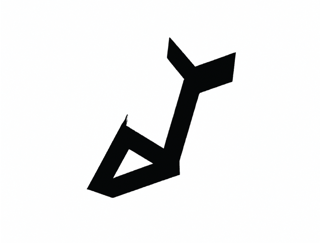Skyler.AI
Wall of Transition
Works
-
Typeface design
-
AI creation (alternatives)
-
Physical installation
-
Animation showcase

The "Wall of Transiton" is based on a titled acid typeface I designed as the foundation of database and input for AI. There are six sets of typefaces, 156 alphabets in total. Each set of typeface has a different extend of AI manipulation from the original to totally AI generated outputs as audience walks from the left to the right side of the wall.
The purpose of the wall is to create an experience for audience to see the difference between human and AI creations and see how many possibilities could AI bring to us. For typeface design, designers are usually framed by certain rules and structures from either guidlines or common senses, which restricts creativity and possibilities; for pure AI usuage, it is hard to identity the authorship of the type. Therefore, when we collaborate with machine, starting from certain fixed input created by human, the partnership would be more controlled.
Introduction

Tiled Acid
Tiled Acid is an unconventional typaface designed based on a gird of 30 degree angle. The comtemporary new acid styles are usually bold, lively, and aggressive. While this typeface is aggressive at certain degree, it follows a consistent rhyme in details: Aggressive strokes, irregular negative counter and aperture, tiled shoulders and terminals, and so on.
Based on this original typeface, the next alternative approach would be using AI for furthur manipulations. In the first round, I set the strength of AI to minimal, which the result is similar to the original input withour surprise. As I increase the strength of AI manipulation, the outputs were turning more geometrical, abstract, weird, and more computer-sense. I surprisingly found out that some final results in later versions became similar to hierglyphics and oracle scripts. Some appear to look more like symbols instead of typefaces, which was the earlier stages of typographic development. Basically AI is using its database to generate new ouputs, and those outputs are done by deconstructing, reformulating the inputs, providing us with alternative directions in a way how machine brain functions in design. This experimenta also provides my with inspirations for future typeface design to explore more possibilities.






























































































































